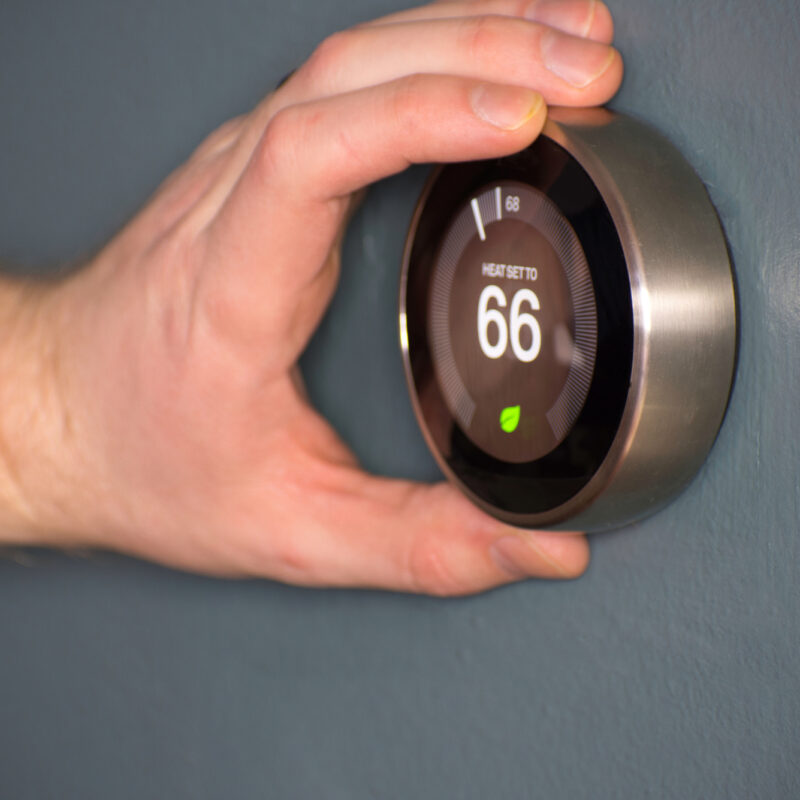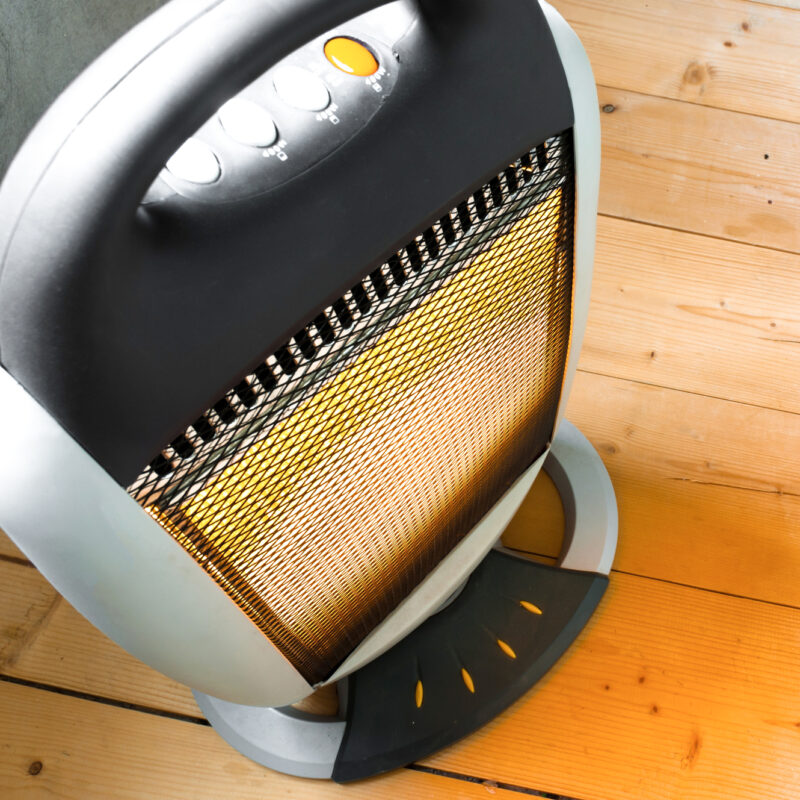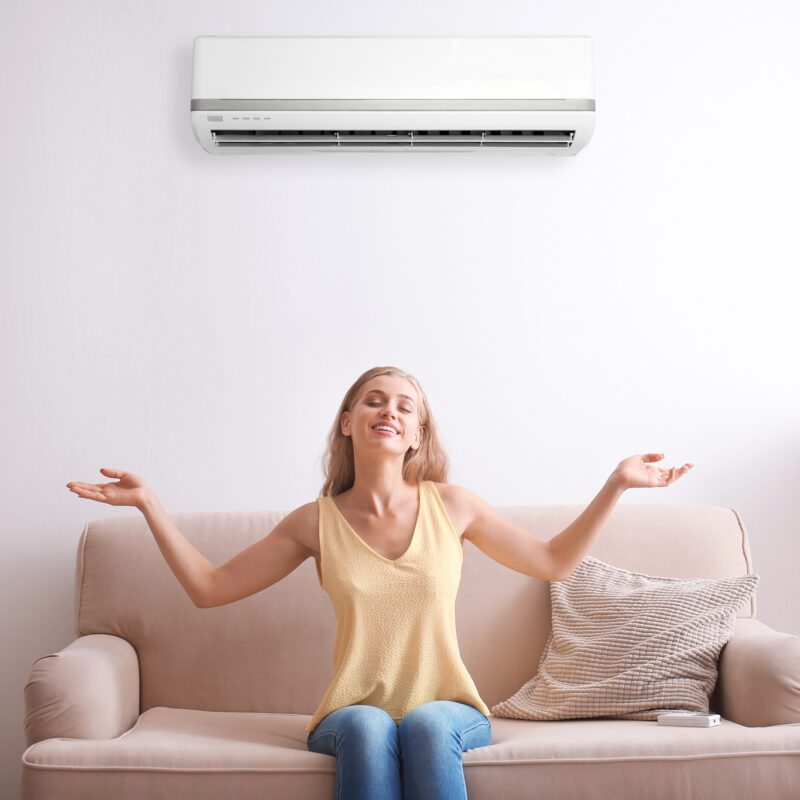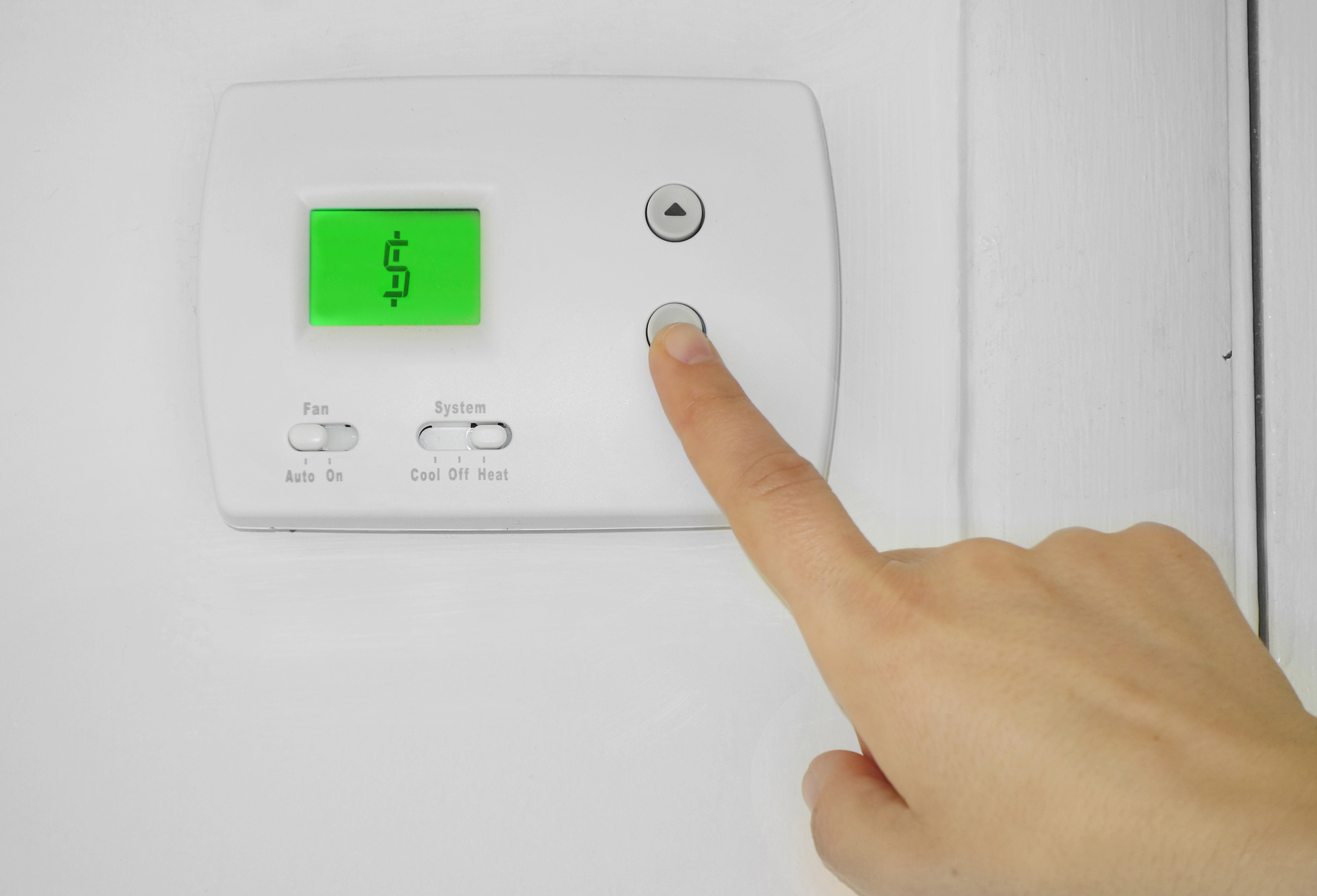Record-high utility prices have homeowners eager for short- and long-term solutions to reduce costs and improve the efficiency and value of their home. Operating an HVAC system takes the largest toll on energy use in most homes and drives up utility bills. And it’s absolutely crucial to the occupants’ comfort. Debunking a few common heating and cooling myths reveals ways to lower energy costs and lessen the impacts of climate change.
MYTH #1
My other appliances don’t impact how well my HVAC works
 Most appliances and tools use energy even when not in active use. Items that require a lot of energy to operate (e.g., dryer, dishwasher, EV charger) increase a home’s peak load, i.e., how much electricity it needs to pull from the local grid at a given moment. Running several energy-intensive or inefficient appliances at once, particularly at a time when energy costs are high (summer afternoons, for instance) can not only trigger higher bills and strain the grid, but also cause the appliances themselves to run less efficiently.
Most appliances and tools use energy even when not in active use. Items that require a lot of energy to operate (e.g., dryer, dishwasher, EV charger) increase a home’s peak load, i.e., how much electricity it needs to pull from the local grid at a given moment. Running several energy-intensive or inefficient appliances at once, particularly at a time when energy costs are high (summer afternoons, for instance) can not only trigger higher bills and strain the grid, but also cause the appliances themselves to run less efficiently.
Look up your utility’s rate schedule to understand when costs and demand are high, and try to plan around these windows. Not every task can be completed overnight, but waiting to charge your EV or run the dishwasher will help you avoid peak pricing and keep other appliances and systems, like HVAC, more efficient and effective.
Whole home energy monitoring devices and platforms provide a deeper understanding of how energy is being used and wasted in your home. These are available at a variety of price points and identifying simple actions that could lower utility bills may make that upfront cost worth it! In the same way, upgrading to smart appliances with advanced technology and those with ENERGY STAR certifications could prove worthwhile investments in the long term.
MYTH #2
I won’t notice a difference in energy costs with a smart thermostat

The US Energy Information Administration estimates that HVAC operations account for over 50% of home energy use. That’s a large portion of your utility bill and an area where even small changes to your habits can make a big difference.
Smart thermostats have grown in popularity in recent years. These devices are designed to take the guesswork out of saving energy while also keeping your home comfortable. Many come with suggested eco-friendly settings or profiles that run automatically and will raise or lower your set temperature during portions of the day to maintain efficiency and keep costs low.
Even just upgrading from a traditional thermostat to one that allows for programmable digital temperature controls can help lower costs over time. While you may not notice an immediate difference on your next bill, the consistent changes will reduce costs and preserve the health of your HVAC system. For instance, setting a thermostat back 7-10 degrees for eight hours a day can lower utility bill costs by 10% annually.
MYTH #3
Relying on space heaters in drafty parts of my home is more efficient

Space heaters are notoriously inefficient and expensive to run. If you’re bringing in space heaters to keep areas of your home warm while your heating is also running, you have a larger weatherization problem. Drafts come from improper or worn sealing on doors and windows, in attics and even around electrical outlets. Cranking up your heat or plugging in those space heaters is not a long-term fix and will cost you more over time as heat continues to escape in these places.
The same goes for summer. If you find yourself turning to window or wall units and additional fans because your central air conditioning isn’t up to the job, insulation issues are to blame.
Addressing these issues can be simple. Look for DIY weather-sealing solutions like adhesive barrier tape that can be applied to windows and doors. A professional home energy audit may also come in handy here if initial repairs don’t do the trick. These assessments can cost as little as $100 to $150 and identify places where larger, planned repairs can lead to terrific cost savings over time. According to the EPA, air sealing and insulation upgrades in attics, crawlspaces, and basement rim joists can save homeowners an average of 15% on heating and cooling costs.
MYTH #4
Setting my thermostat higher/lower will heat/cool my home more quickly

Maintaining a consistent, eco-friendly temperature is always the smarter choice for energy efficiency and the health of your HVAC system. The DOE recommends a set point of 68 degrees during winter months and 78 degrees for summer. While it can be tempting to bump the temperature down several degrees on a hot day when you’re returning home from running errands and craving a blast of cool air, doing so will not cool your home faster and, in fact, a lot of energy can be wasted in the process.
Even if you want variation in your home’s climate throughout the day—keeping things cooler at night or warmer on winter days when you work from home, for instance—try to stick to a schedule and consistent set points when you do make changes. This is another instance where a smart thermostat with automated and programmable options can help you save energy and reduce bills by sticking to your plan. No matter what type of thermostat you’re using, you can also look to fans, shades, dehumidifiers, and other tools to help maintain comfortable temperatures in your home.
Easing the path to savings
To begin addressing these myths, you simply need to commit to behavioral changes that require little to no financial investment. There are also larger upgrades and projects, including installing renewable energy technologies and storage to lower a home’s carbon footprint and decrease utility costs over time. But that undertaking will always be preceded by an energy and weatherization audit and any needed improvements.
While many homeowners still may be unsure where to start, the Inflation Reduction Act (IRA) introduced last year extended a 30% tax credit for rooftop solar and energy storage, and expanded rebates and tax credits for a range of home improvements and technologies. By easing the point of entry for millions of homeowners, the IRA offers attractive options for bolstering home efficiency and value through clean energy.
The author:
 Greg Fasullo is CEO of Elevation, a whole-home energy solutions company that provides energy efficiency repairs, solar panels, and energy consumption education across the country.
Greg Fasullo is CEO of Elevation, a whole-home energy solutions company that provides energy efficiency repairs, solar panels, and energy consumption education across the country.
Our team researches products, companies, studies, and techniques to bring you the best of zero building. Zero Energy Project does not independently verify the accuracy of all claims regarding featured products, manufacturers, or linked articles. Additionally, product and brand mentions on Zero Energy Project do not imply endorsement or sponsorship unless specified otherwise.


Above and Beyond says:
Thank you for such informative article on myths about home cooling and heating. It helped debunk several misconceptions that many people have. I’d like to add a simple point about fans: they don’t cool the room but create a cooling effect by increasing evaporation from the skin. Remember to turn off fans when leaving a room to save energy.
Integrity says:
“Yes” to all! Thank you for highlighting all these myths. Another false belief is that maintenance is a waste of time and money. On the contrary, a dirty filter and a system that has not been serviced for a long time will consume a lot more electricity.
Happy Hiller says:
Many also believe that completely turning off the air conditioner while away is a money-saving tactic, but it’s actually a cooling myth that can cost you more. The belief is that leaving the AC off entirely will save energy since it’s not running. However, this approach can allow the indoor temperature to rise significantly during the day, especially in hot climates, making it harder and more energy-consuming for the AC to cool the house back down when you return.
Setting the air conditioner at a sensible 72 degrees before leaving for the day can be a practical way to strike a balance between energy efficiency and comfort.
Polestar says:
I also want to mention a misconception that replacing broken items or HVAC appliances might not always be sustainable, and that it’s better to consider repairing them.
Of course, in some cases, a simple repair is enough. For example, when the system is relatively new and the issue is not too serious. However, if the system is 10 years old or older, upgrading to a new and more energy-efficient system might be a wiser solution. Investing in a new, highly efficient system can provide long-term benefits, saving both money and energy consumption. By embracing greener technologies, conducting regular maintenance, and implementing energy-efficient practices, homeowners can create a more sustainable and cost-effective approach to heating and cooling.
Gervais Mechanical says:
That’s a valuable addition! Thank you.
However, when upgrading to a new heating or cooling system, please remember that the minimum efficiency standards for newly installed heating and cooling systems have been changed as of January 1, 2023.
ST says:
Informative article! In addition to the mentioned myths, it’s important to remember the impact of proper maintenance. Regularly cleaning and maintaining your HVAC system, including the coils and vents, can improve its efficiency and save you money in the long run. Neglecting maintenance can lead to reduced performance and increased energy consumption.
Edelman says:
Yes, now the transition to solar energy is more accessible and affordable due to the government’s solar incentive. I only want to add that this government solar program also allows for backdated deductions on installations in 2020 and 2021, as well as systems installed on or before December 31, 2019. As of 2033, this federal solar tax credit program will decrease to 26%, then to 22% in 2034 before expiring in 2035, unless further modified by the U.S. Congress.
Read this article if you want to know more about solar incentives: https://www.edelmaninc.com/blog/power-up-your-savings-a-guide-to-solar-incentives/.
KC’s says:
I think it’s important to note that using HEPA filters with high MERV ratings isn’t always the best choice for homeowners. While these filters are excellent at trapping tiny particles, they can also restrict airflow in your HVAC system, making it work harder and potentially leading to increased energy consumption.
Thanks for such an insightful article!